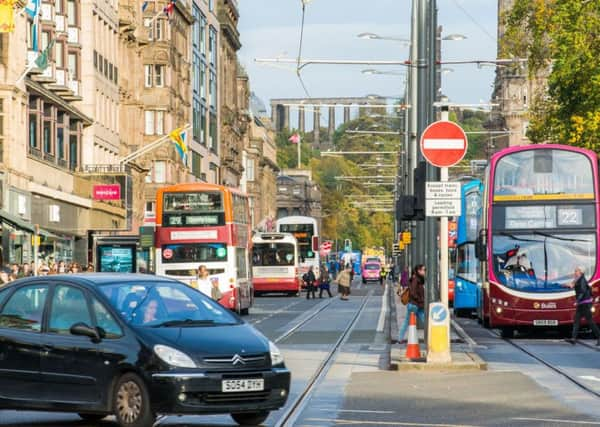John McLellan: It's the same old vehicular story with no solutions


It “improves safety for all, reduces the environmental impact of travel, supports the local economy, promotes health and fitness, reduces social exclusion.” And further, it “maximises streets as the focal point of our communities where people can meet, shop and, where appropriate, children can play.”
Familiar? It’s not from the “Connecting our city, transforming our places” report under discussion at today’s transport committee, but the 2003 case for the original tram vision of a circle taking in Princes Street, Leith Walk, Newhaven, Granton, Roseburn and Haymarket. As we know, only four of the 22 stops were built.
Advertisement
Hide AdAdvertisement
Hide AdThe 2003 report is just one document from years of studies and consultations, the most recent last year, at least one botched city centre traffic scheme and of course the 2005 congestion charge referendum. Even the much-loathed 1949 Abercrombie Plan is an example of planners applying new transport thinking to the challenge of moving people around a historic city centre.
Of course the issues concerning Patrick Abercrombie were very different to those of today, but with so much work having been done in the past, the ideas which form the basis of the latest consultation are, while still controversial, surprisingly unsurprising and vague.
It’s as if those behind the report have just woken up to the need for action but apart from some up-to-date statistics, the latest report could have been written any time over the past 20 years and rehearses the same arguments made during the congestion charge debate and for years ever since.
We’ve repeatedly heard that city centre roads can’t handle more buses, pollution is so bad that health is being affected, that solutions must be found. Even with a truncated tram line, here is the Council administration still making the same arguments for major change, but with actually less of an idea of what to do about it than in 2005.
Advertisement
Hide AdAdvertisement
Hide AdThe impression created by the latest document is there are very broad options and you the public have the opportunity to shape the future, but from the behind-the-scenes conversations within the administration, there is little doubt those driving this project favour the most radical suggestions, like buses not being able to go across the city centre and “last mile” delivery hubs for freight.
But how, where and how much? Round Picardy Place, so the cycling lobby can kick off again? Haymarket? Anyone for a freight hub at the bottom of their street? Is public transport use going to be increased by, er, banning public transport from the city centre? Such ideas have been knocking about for years, but what the public needs now is more information. Abercrombie couldn’t be faulted for detail and confidence, his ideas laid out in a coffee-table sized hard-bound book compared to the latest 60-page online pamphlet.
In a densely packed, fully-populated city centre, a headline-grabbing Big Bang approach has huge consequences too, but for all the happy, smiling faces of schoolchildren bussed in by the authority to promote a city centre traffic ban on Clean Air Day, there still has been no adequate answer to the fumes belching out elsewhere from increased congestion caused by displacement.
The council has the deputy director of the transport charity Sustrans, architect Daisy Narayanan, on secondment to direct the Central Edinburgh Transformation project, with £760,000 of public funding available to bring forward proposals. I have yet to meet her, but by all accounts she is taking a very measured approach which recognises the need to balance conflicting interests and is suspicious of silver bullet solutions in such a complex place.
But we don’t need another consultation to work that out.
